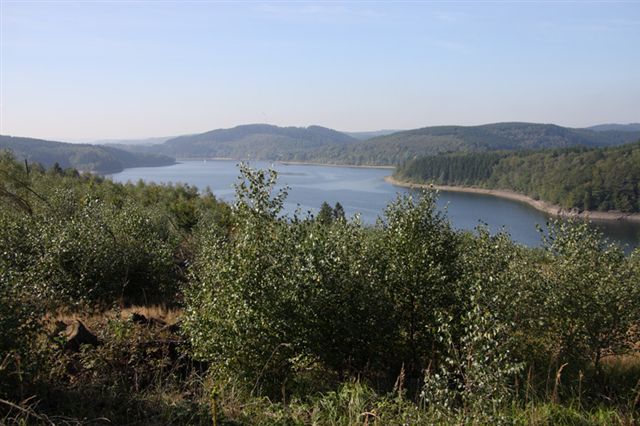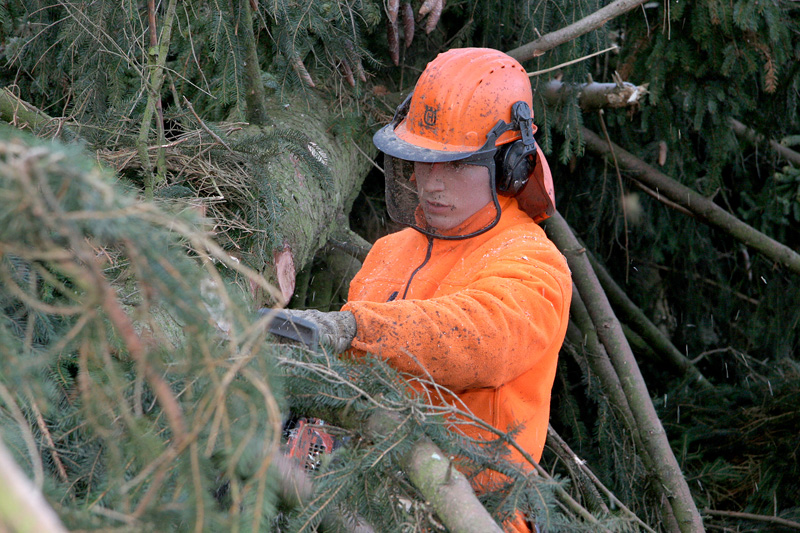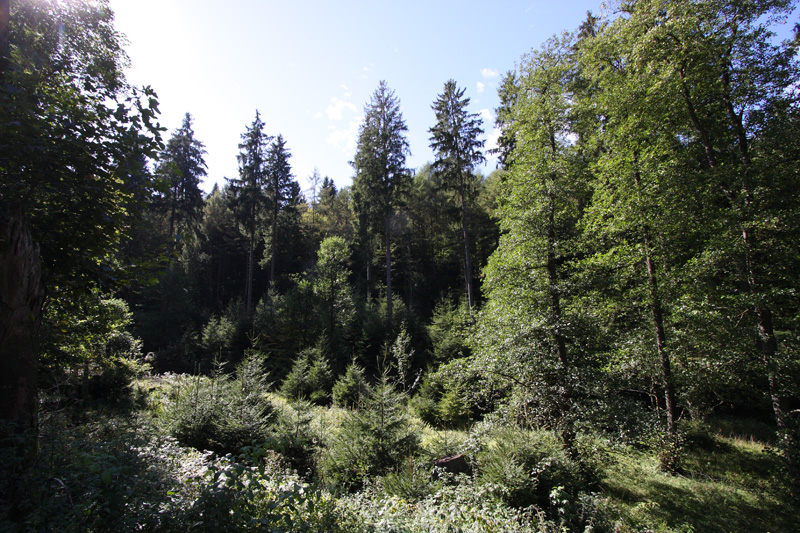Ruhrverband forestry
The Ruhrverband's forest areas cover a total surface space of about 2,900 hectares and are located primarily around the Ruhrverband’s eight dams and reservoirs. Forestry follows the latest scientific developments in forest ecosystem management, including water protection, improvements to biotope and species diversity and landscaping measures. The bulk of the produced wood is marketed to local sawmills. Moreover, the Ruhrverband carries out regular road safety controls with regard to the trees on its premises.
The forest is good for the water
With its 4,488 square kilometres of surface space, the Ruhr river basin in the Sauerland area does not contain considerable amounts of groundwater. As a result, the River Ruhr's flow rate depends on highly irregular precipitation and compensation water from the reservoirs. In the rainy Sauerland, the forest therefore serves an important function, storing large amounts of water from irregular precipitation. Of all forms of vegetation, it provides the most valuable contribution to regulating water discharge. Moreover, it provides flood protection. At the same time, it serves as a filter, ensuring good water quality and protecting the reservoirs against soil erosion, silting and the resulting loss of storage capacity.
Today, the Ruhr Region's water requirements are ensured by the reservoirs. In the process, the forest provides an important contribution to water management.
Forestry
The forests of the Ruhrverband are subject to ecological forestry measures to ensure water quality by promoting biodiversity and structural variety. This includes:
- No clear felling, as clearings interrupt forest nutrient cycling, thus having a negative impact on water quality;
- Restructuring of large spruce stocks into deciduous or mixed deciduous-coniferous stocks, as the latter contribute to soil improvement and are more resilient against damage by storms and insects, as well as the expected climate change;
- Inclusion of secondary species such as rowan trees, willow and birch trees, to improve forest nutrient cycling and increase biodiversity.
Ecology and landscaping
The dams, reservoirs and surrounding forests serve as characteristic landmarks. The high tree variety and diverse forest age structure underline this function, while providing ecologically stable biotopes. The preservation of old and dead trees (dead wood), and the conservation of "special biotopes" such as rocks, debris cones and humid zones help to protect and preserve these biotopes and their biocoenoses, as well as rare and protected flora and fauna.
In designated areas, special pasture and grass species are grown to protect the banks of the reservoirs. In addition to securing the banks, these areas create an ecological transition zone between the water and the forest, while promoting ecological biodiversity.
Thanks to the forestry principles described above, the Ruhrverband's forests contain a large number of biotopes worthy of protection. In combination with the significance of its reservoirs as resting and feeding sites for water birds, this has led to the establishment of several nature reserves. Of particular importance in this context is the Möhne Reservoir with its internationally renowned bird sanctuary, parts of which have been classified as a flora and fauna habitat (FHH) in accordance with the European Habitats Directive on the conservation of wild flora and fauna.
Foresty facts and figures (as of 2011)
| Forest surface: | 2,900 hectares |
| Forest type: | 50 per cent deciduous, 50 per cent coniferous |
| Climate: | Mean annual temperature 6.5 to 8.5 degrees celsius Mean annual precipitation 870 to 1,400 millimetres Elevation 165 to 724 metres above sea level |
Contact
Head of office:Ruhrverband, Terms of reference: Forestry and ecologyEckeystraße 459519 MöhneseeTel. 02924 9704-24
Districts:
Henne Reservoir und Neger-/
Bremecke Valley
Berghausen 17
59872 Meschede
Tel. 0291 90229-26
Möhne- und Ennepe Reservoir
Eckeystraße 4
59519 Möhnesee
Tel. 02924 9704-22
Sorpe- und Verse Reservoir
Langscheider Straße 1
59846 Sundern-Langscheid
Tel. 02935 965628
Bigge Reservoir
Birkenfeld 8
57439 Attendorn/Neu-Listernohl
Tel. 02722 7069-13











